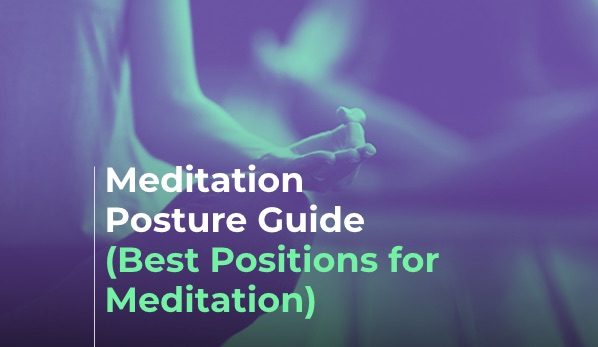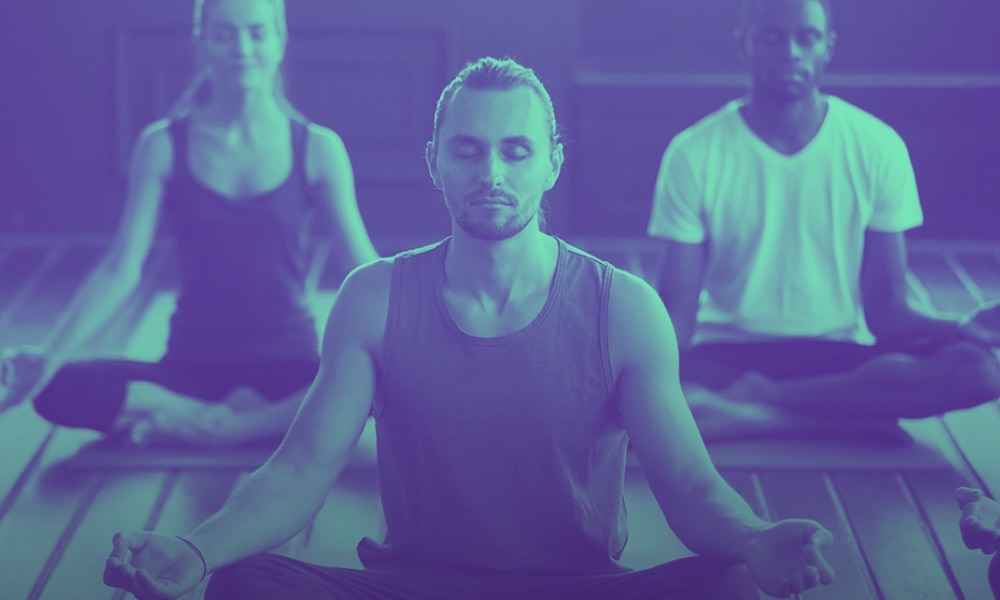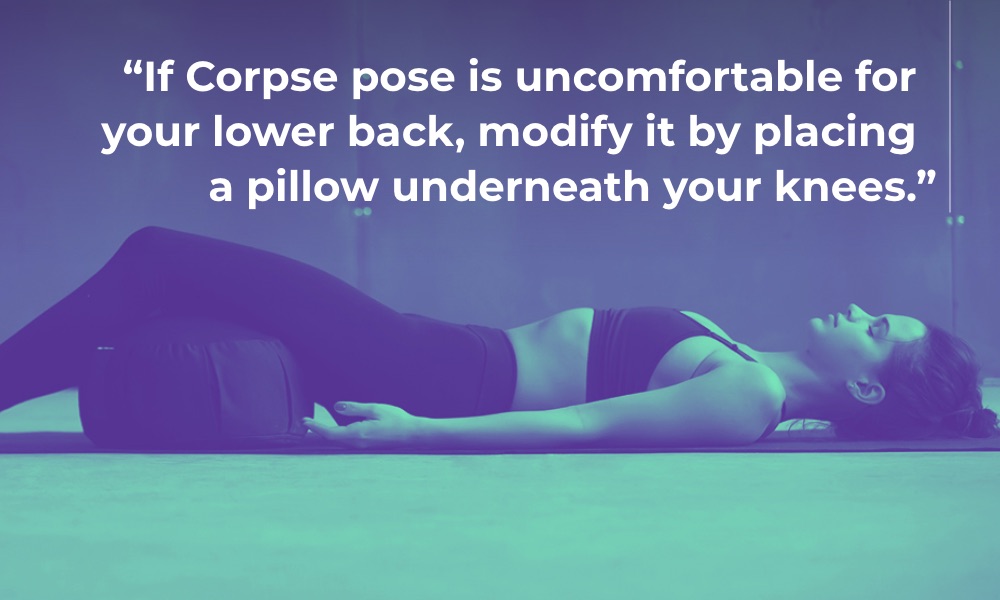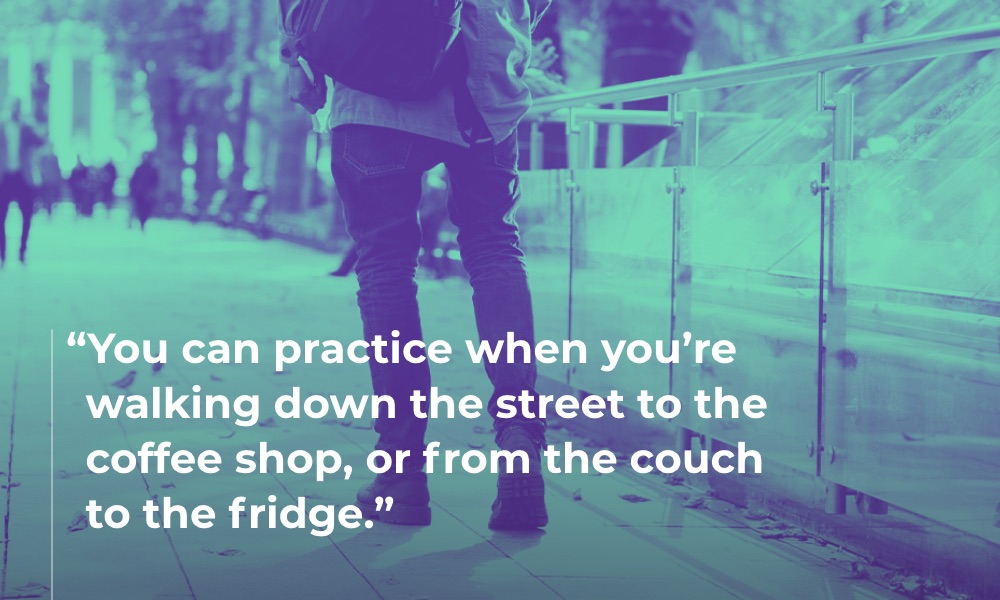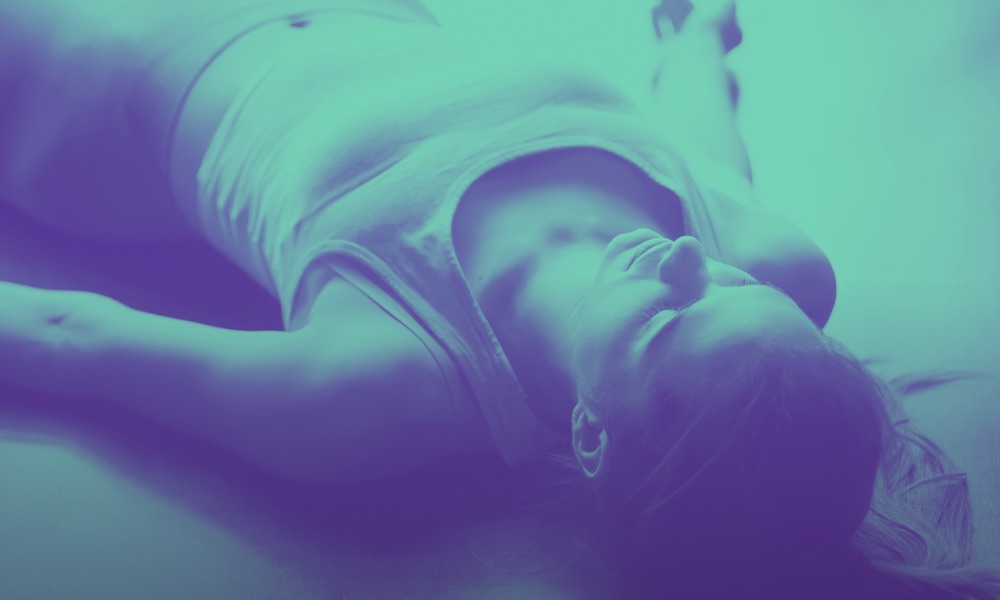Good posture is critical to a successful meditation practice; it helps you stay alert and relaxed at the same time.
Just as there are a lot of different meditation techniques, there are many different meditation postures as well. It’s all about finding what works best for you.
In this post, we cover the different meditation positions. We discuss elements of good meditation posture, and we examine some of the frequently asked questions about meditation poses. By the end of this post, you’ll better understand the meditative yoga positions and how to find the best one for you.
The Importance of Good Meditation Posture
Good meditation posture helps you stay focused and relaxed. It sets you up to get the most out of every meditation session. The proper meditation posture even has the potential to improve back pain and alignment over time. Good meditation posture includes a straight (but not too rigid) spine, neutral hips, chin slightly tucked, and shoulders away from ears.
There are four general types of meditation positions: sitting, lying down, standing, and moving. Each type has various asanas (poses) you can choose from. As we discuss the different meditation poses, remember that each pose requires good posture.
Sitting Meditation Positions
Let’s begin with the obvious: sitting postures involve sitting. Sitting meditation positions are the most recommended because they provide the ideal combination of alertness and relaxation.
You may sit on the floor or in a chair. If you sit on the floor, use a meditation cushion (also called a zafu) or a yoga mat to make yourself more comfortable. You can also kneel on a mat or a cushion if that feels better for your body.
You may also sit on a chair, a meditation seat, or a meditation bench.
There are several different ways to sit while meditating, and they require varying degrees of strength and flexibility.
We’ll go through the poses from least to most challenging. Choose the one that is most accessible for you at this moment; you can always work up to a more advanced pose. This isn’t the time to challenge yourself by bending into an uncomfortable position that you’re not ready for.
Kneeling Pose (Vajrasana / Seiza / Virasana)
The most common meditation pose is a cross-legged seat. But for some, crossing their legs is painful. If sitting cross-legged is not comfortable for you, try kneeling. To kneel, bend your knees and lay your shins flat on the ground. We recommend kneeling on a blanket or yoga mat so you don’t hurt your knees and shins. Then sit your weight back towards your heels, and lengthen your spine.
Ensure you have good posture by lowering your shoulders back and down, lightly tucking your chin, and keeping your hips neutral.
There are many different ways to kneel while meditating. You can tuck your toes or lay the tops of your feet flat on the ground. You can rest your rear on your heels, or you can sit on the ground between your feet. Remember to use some padding, so you don’t experience leg pain. You can also purchase a special “seiza bench.” This meditation bench makes kneeling more comfortable.
Easy Pose (Sukhasana)
Easy pose is a popular sitting meditation posture. And, as the name implies, it’s one of the easiest poses to perform. To do it, simply cross your legs and elongate your spine. You may sit on a cushion, pillow, mat, or directly on the floor.
Burmese Pose (Siddhasana)
If you’ve meditated in Easy pose and want to try something a bit more complex, Burmese pose may be the best option for you. To do Burmese pose, bend your knees like you’re coming to Easy pose, but instead of crossing your legs, lay your feet on the ground. Bring your inner foot close to your groin, so it touches the inner part of the opposite thigh. Lay the outer foot in front of the inner foot. Sit up straight, ensuring correct posture.
Half Lotus Pose (Ardhapadmasana)
If you’re flexible and want to try something more challenging than Burmese, try Half Lotus pose. To do Half Lotus, sit in Easy pose. Then, put one foot on the opposite thigh. Allow your other foot and leg to rest on the ground and elongate your spine.
Full Lotus Pose (Padmasana)
Lotus position is the pose you most likely picture when you think of regular meditators. It’s a popular advanced position because it holds all of your muscles and spine in place, so you don’t have to think about them while you’re meditating.
However, this pose requires a large amount of flexibility and is not always accessible to beginners. We suggest building your way up to Full Lotus using the previously mentioned poses.
If you’re ready to do Full Lotus, sit in Easy pose. Then rest your right foot on your left thigh and your left foot on your right thigh. With feet now resting on the opposite thighs, breathe and remember to keep your back straight.
Chair Meditation
If pain or discomfort prevents you from sitting on a cushion on the floor, try a chair meditation. To meditate in a chair correctly, move forward, so you are not resting on the back of the chair. Place your feet flat on the ground (creating a 90 degree angle with your knees), and elongate your spine. You can place a pillow under your hips if that makes sitting in the chair more comfortable.
Lying Down Meditation Postures
A lying down meditation may feel the most accessible to you if you are in physical or mental pain, and it’s a perfectly valid way to meditate! It may even improve your posture over time. Unless you’re meditating to fall asleep, you want to try and stay awake during your lying down meditation.
To avoid falling asleep, stay hydrated and don’t meditate first thing when you wake up or right before you go to sleep. You should also avoid lying down in bed to meditate, as this will also make you sleepy.
Corpse Pose (Sasavana)
Yogis may be familiar with Corpse pose, which is often done at the end of an asana yoga class. To do it, lie flat on your back with a straight spine and your legs hip-distance apart. Allow your arms to relax by your sides with your palms facing up. Your legs will naturally turn outward. Ensure you have enough space to stretch out.
If Corpse pose is uncomfortable for your lower back, modify it by placing a pillow underneath your knees. You can also add support behind your head and shoulders using a pillow or blanket. If you’d like, you can place a bolster or yoga blocks under your back, so you lie at an incline. The incline can also help prevent you from falling asleep.
Semi-Supine Pose (Modified Savasana)
You may choose this if a full Corpse pose is not a comfortable posture. Begin in Corpse pose, then place your feet flat on the ground, hip-width apart. Allow your knees to fall inward toward one another.
Standing Meditation Poses
Standing meditations are a good option for increasing physical and mental strength. When you meditate in a standing posture, you must retain proper balance and ease. This strengthens the connection between your mind and body.
You may prefer a standing meditation if you sit at a desk for work all day. Standing meditations tend to keep you more alert than sitting ones, so if you tend to nod off while seated, a standing meditation may be a good option to try. This is also a good alternative if sitting causes pain or discomfort.
Mountain Pose (Tadasana)
To do Mountain pose, plant your feet hip-width apart. Press down into all four corners of your feet, and bring a gentle bend to your knees. Stack your hips over your ankles, and stack your shoulders over your hips. Relax your shoulders away from your ears and let your chin tuck slightly. Allow your arms to fall by your sides, or place one hand on your belly and one hand on your heart. Elongate your spine and breathe.
Standing Like a Tree (Zhan Zhuang)
To do Zhan Zhuang pose, you practice standing like a tree. This pose is thought to balance your energy and is a great antidote to sitting at a desk all day. To do it, begin by standing up and relaxing your body and breath. Focus on sinking your feet into the ground. Bend your knees slightly and round your arms in front of you, like you’re hugging a beach ball. Tuck your head slightly and allow your back to elongate.
Moving Meditations
You don’t have to be still to meditate; you can meditate while moving! Some popular forms of moving meditation are yoga asanas, tai chi, and walking. Moving meditations include all the benefits you get from exercise, such as increased blood flow, reduced anxiety and depression, and improved digestion.
You can practice a moving meditation by moving with your breath and being present and aware of each movement.
As with any other type of meditation, a moving meditation requires good posture and proper alignment.
Walking Meditation
The best part about a walking meditation is that you can practice it anytime you walk. So you have many opportunities to practice it throughout the day. Any time your feet are moving is a great time to meditate! You can practice when you’re walking down the street to the coffee shop, or from the couch to the fridge.
To do a walking meditation, walk without headphones or other distractions. Keep your spine elongated and allow your arms to sway naturally at your sides. Breathe normally, and focus on each part of the process of walking (lifting the foot, placing it down, etc.).
How to Choose a Meditation Position
If you’re unsure of which position to choose, try sitting first. As long as sitting doesn’t cause any pain or discomfort, it is the recommended meditation asana. Sitting up straight helps you feel more alert than when you are lying down, so you’re less likely to fall asleep. At the same time, sitting helps you feel more relaxed than when standing, which is also essential for meditation.
But if lying down, standing, or moving is more enjoyable for you, please select that one! Choose whichever meditation position is the most comfortable for you, to ensure the likelihood of meditating every day.
Meditation Posture Tips
Regardless of which meditation pose you choose, there are a few posture tips to keep in mind to give you the best meditation experience.
Spine
Keep a straight and unsupported spine while meditating, and align your head and neck over your spine. This makes you more alert and focused, plus it’s better for your back. Avoid slumping, slouching, or over-straightening your back.
Hands
While you’re meditating, you can rest your hands on your legs or the floor. You can face your palms up to invite in new energy. Or, you can face your palms down to create a grounding feeling.
You can also try a hand mudra, which is a hand gesture with symbolic meaning. A well-known mudra is Gyan mudra. To perform this mudra, touch the pointer finger and the thumb to create a circle. Keep the other fingers straight. Gyan is said to improve concentration, insight, and memory.
Another mudra is the Dhyana mudra. To create Dhyana, hold your hands out with your palms open. Stack your right hand on top of your left. Bring your thumbs together to touch above your palms. Dhyana is said to bring more profound concentration and help you cultivate inner peace.
Of course, you don’t have to do anything specific with your hands. But whatever hand position you choose, be sure not to clench your hands tightly. If you find yourself tensing your hands, it’s a good signal that you need to relax your body.
Shoulders
Even if you’re lying down to meditate, it’s important to relax your shoulders down and back. This opens your chest and creates more space in your body, which is important for getting the most of your meditation session.
Chin
While you’re meditating, keep a neutral head and your chin slightly tucked. It should feel like someone is pulling a single strand of hair on the top of your head up, towards the sky. Positioning your head this way elongates the back of your neck.
Eyes
Your eyes can be closed during meditation, or you can hold a relaxed and unfocused gaze a few feet in front of you. Whichever you choose, don’t squint or squeeze your eyes shut too tightly.
Other Posture Tips
Keep your hips neutral and your weight evenly distributed. Before you begin your meditation session, release tension in your entire body. Start with your forehead and jaw, and work your way down to your ankles and toes.
Frequently Asked Questions About Meditation Postures
If you’re new to meditation, all of the posture “rules” can seem intimidating, so we’re here to answer a few questions. But remember that the most important thing is to listen to your own body and do what feels best for you.
What is the Best Meditation Posture?
There is no “best” meditation posture. The best meditation posture is the one that works best for your body. The most common meditation posture is Easy pose. To do Easy pose, cross your legs and elongate your spine.
However, if Easy pose is uncomfortable, don’t do it. It’s important to choose whichever pose works best for your body.
Can I Slouch While Meditating?
Try your best not to slouch while meditating. The way we hold our bodies impacts how we feel, and slouching can lead to feelings of fatigue and being closed-off. These things don’t promote wellness nor do they benefit your meditation practice, so avoid slouching when possible.
Does Meditation Improve Posture?
Meditation can definitely improve your posture! Like anything else, it takes practice. As you meditate more regularly, you’ll begin to notice when you’re out of alignment in your everyday life. This will help you move into the correct position. So practice good posture while meditating, and you can bring that trait into the rest of your life. It’s also an excellent practice in mindfulness.
Is the Correct Posture Important in Meditation?
Good posture during meditation helps you stay awake, alert, and focused. Plus, sitting up straight makes you feel more confident and open to the world, which are two skills that you’re already working on cultivating with meditation!
Practicing Your Meditation Posture with Primed Mind
Although it’s important to focus on your posture while meditating, it’s also critical not to lose focus of the meditation itself. Primed Mind helps you stay on track with guided meditation sessions. Each session is about 5 – 20 minutes, and they can help you overcome fear, boost confidence, reduce stress levels, and get better sleep. With Primed
Mind, you can use any meditation posture that works best for you. The most important thing is to be comfortable and present!

